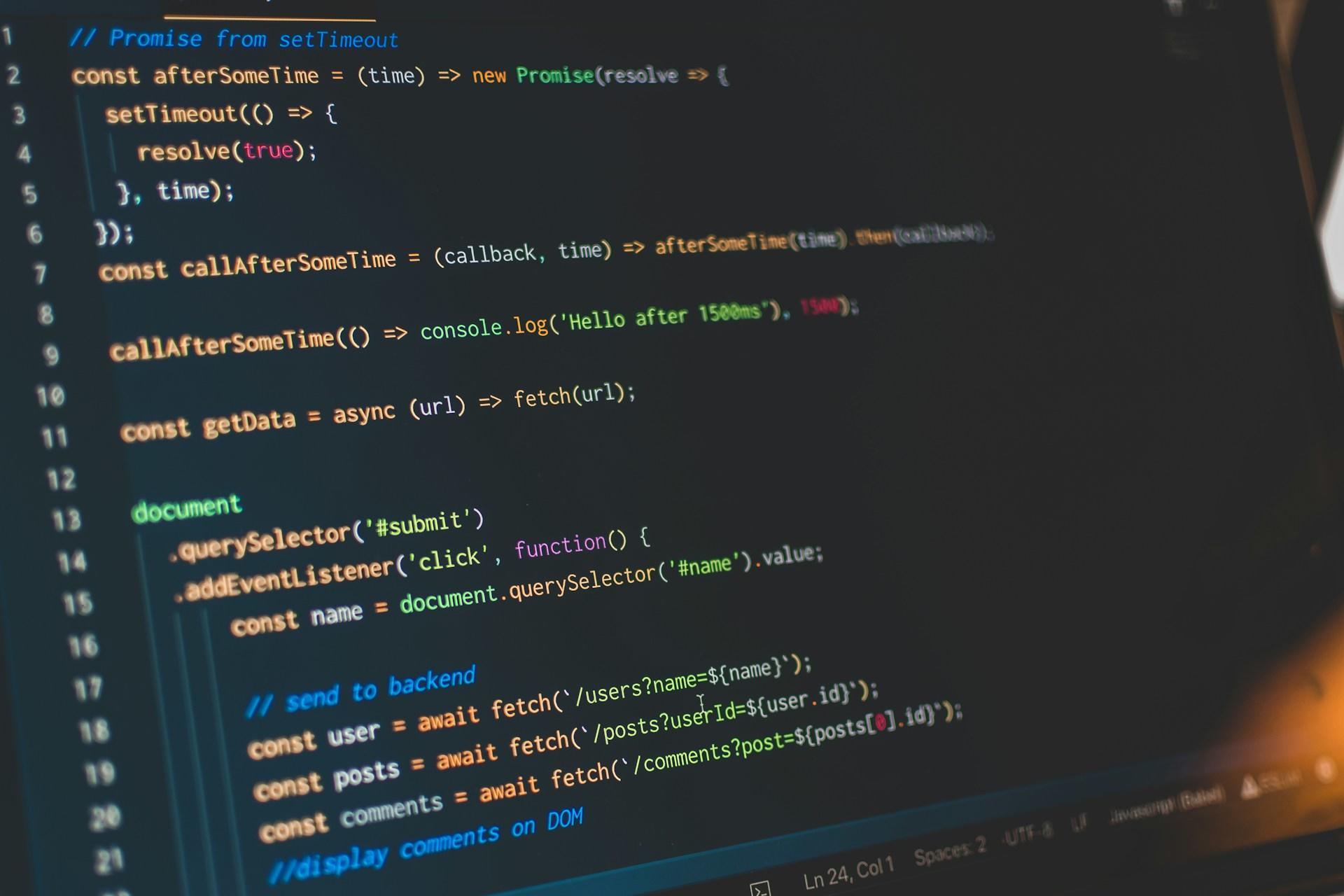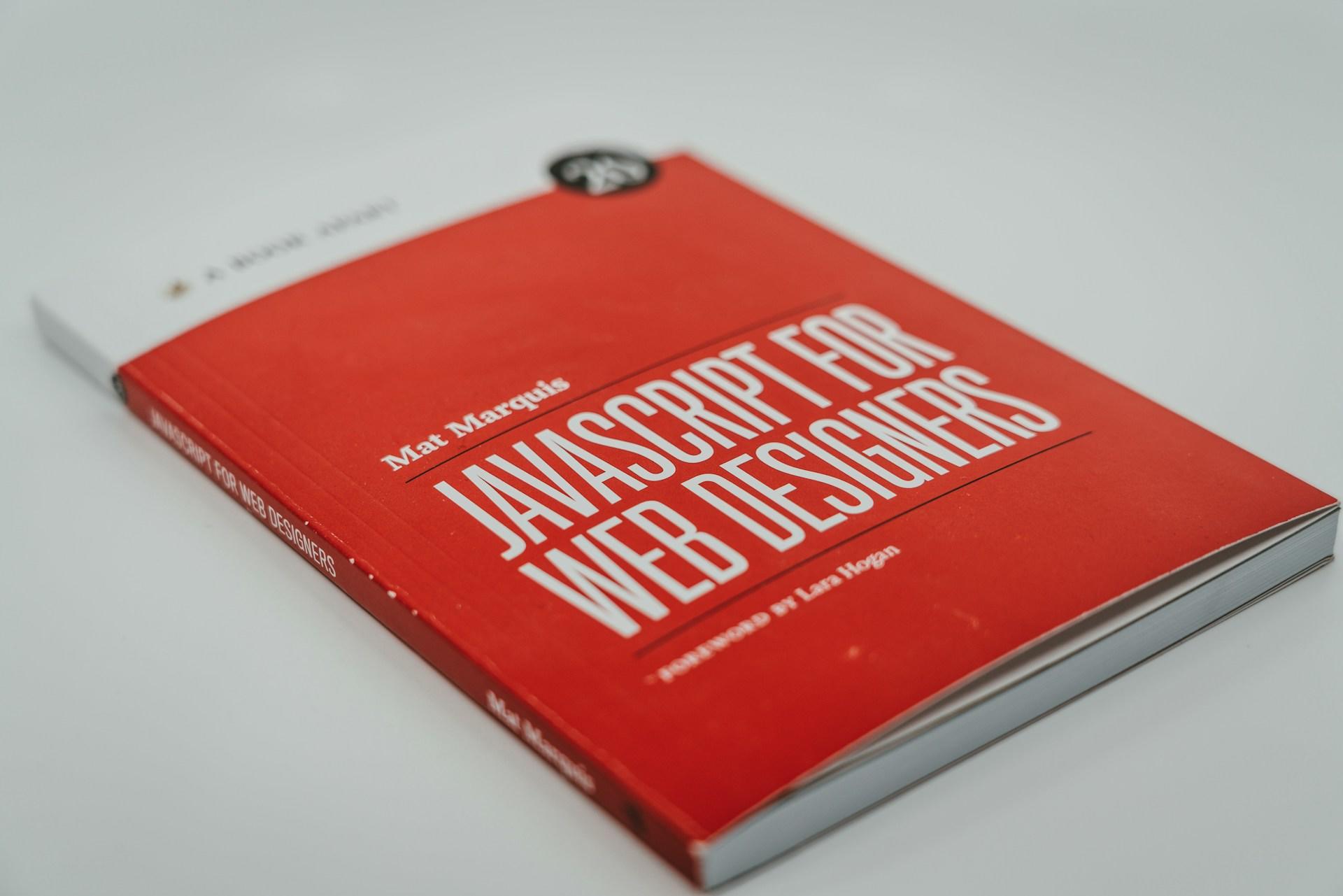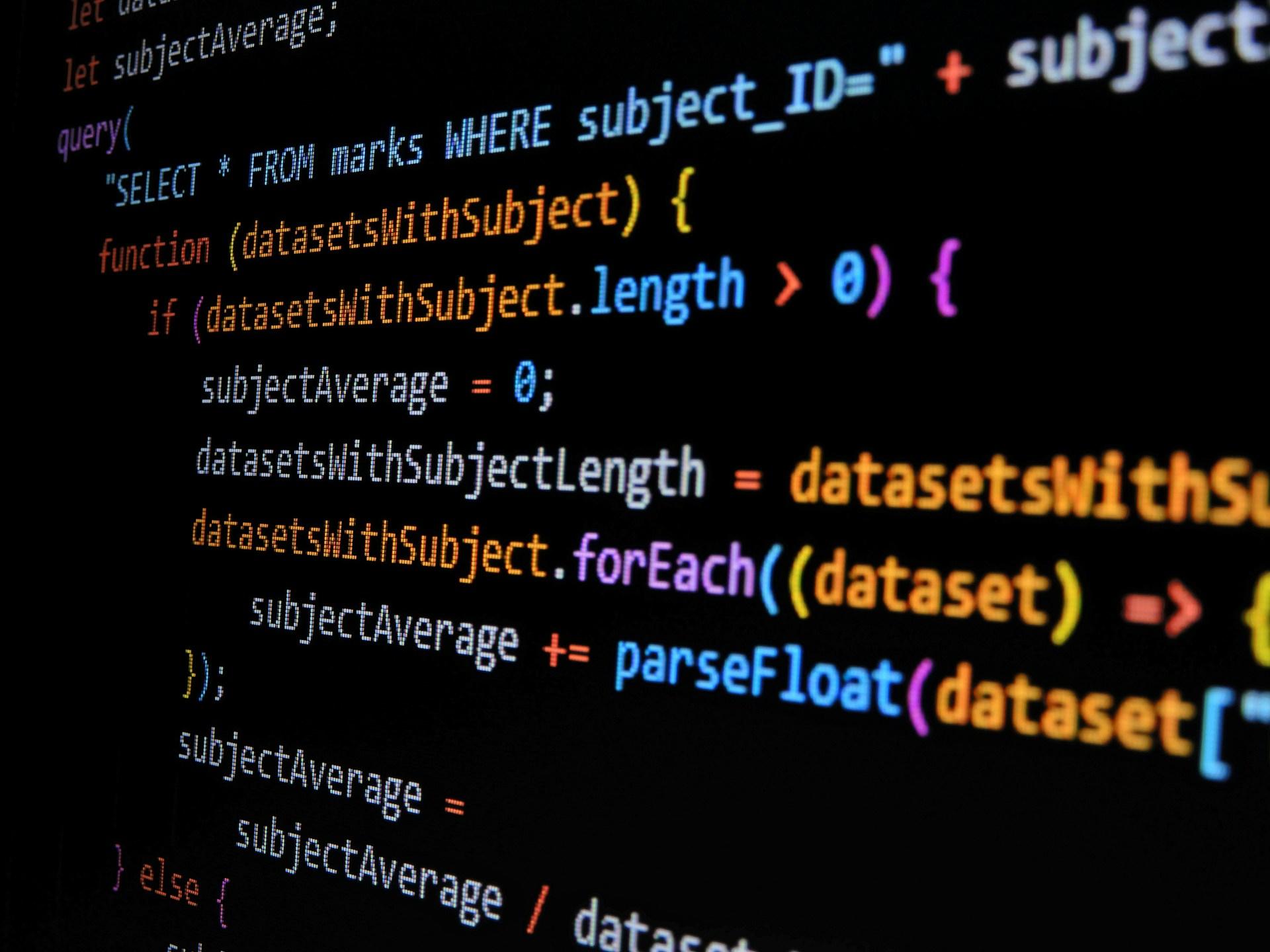If you are fascinated by the world of programming and the endless possibilities it offers then JavaScript will likely become an indispensable tool in your web development arsenal. Its versatility, power, and ever-growing popularity make it an essential skill for any aspiring web developer or tech enthusiast.
In this article, we will provide a comprehensive introduction to JavaScript for beginners, breaking down the key concepts and guiding you through the basics of JavaScript programming. Whether you want to build interactive websites or create web applications, understanding JavaScript is essential. Join us as we explore the fundamental concepts of JavaScript, such as variables, functions, and loops. By the end of this article, you'll have a solid foundation in JavaScript programming and be ready to take on more advanced projects. So let's dive in and unlock the power of JavaScript together!

Why Learn JavaScript?
JavaScript is the backbone of the web, driving the interactivity and dynamic features of countless websites and web applications. Whether it's adding animations and effects or developing intricate single-page applications (SPAs), JavaScript has become the preferred language for crafting engaging and responsive user experiences. By mastering JavaScript, you gain the power to bring your web projects to life, making them more dynamic, interactive, and user-friendly. However, the advantages of learning JavaScript go well beyond web development.
As a versatile language, JavaScript can also be utilised for server-side programming with Node.js, creating mobile apps with frameworks like React Native, and even building desktop applications with tools like Electron. The possibilities for applying your JavaScript skills are limitless, making it a valuable asset in the ever-changing tech landscape.
JavaScript vs. Other Programming Languages
While there are numerous programming languages available, each with its own strengths and use cases, JavaScript stands out as a unique and powerful tool.
Unlike languages such as Java or C++, which are primarily focused on low-level system programming or enterprise-level applications, JavaScript is designed for the web, making it the ideal choice for creating interactive and dynamic web experiences.
One of the key benefits of JavaScript is its ubiquity. As the de facto language of the web, it is supported by all modern web browsers, allowing your code to run seamlessly across a wide range of devices and platforms. This cross-platform compatibility is a significant advantage, as it enables you to write code once and deploy it to multiple environments.
Another notable feature of JavaScript is its versatility. While it was initially created for client-side scripting, the introduction of Node.js has extended its reach to the server-side as well. This means that you can use JavaScript for both front-end and back-end development, creating a unified and consistent codebase that can be shared between the two. Furthermore, JavaScript's dynamic nature and loose typing make it a more approachable and flexible language compared to statically typed languages like Java or C#. This can be particularly beneficial for beginners, as it allows for faster prototyping and experimentation without the overhead of strict type definitions and compilation.

Basic JavaScript Concepts for Beginners
A method in Javascript is like a superpower that allows you to perform actions on different types of data, such as strings and arrays. It's like having a magic wand that can manipulate and transform your data in ways you never thought possible. With just a few lines of code, you can use a method to change the case of a string, split an array into separate elements, or even sort it in ascending order.
It's like having a Swiss Army knife for your coding adventures!
Variables and Data Types
In JavaScript, variables are the basic units that store and hold data. They act as containers for values, allowing you to manipulate and work with different types of information. JavaScript supports a variety of data types, including numbers, strings, booleans, arrays, objects, and more. Understanding how to declare and work with variables is crucial for any JavaScript programmer.
// Declaring variables let name = "John Doe"; const age = 30; let isStudent = true; // Accessing and manipulating variables console.log(name); // Output: "John Doe" name = "Jane Smith"; console.log(name);By grasping these basic methods, you lay the groundwork for more advanced JavaScript programming. As you continue to learn and explore, you'll discover the true potential of JavaScript and how it can transform your web development projects.### Conditional Statements and Loops

Conditional statements like if-else and switch help you make decisions based on certain conditions. These structures let you run different code depending on the outcome of expressions. Loops, however, are used to run a block of code repeatedly, making them crucial for automating tasks that need to be done over and over.
// Conditional statement if (age >= 18) { console.log("You are an adult."); } else { console.log("You are a minor."); }// Looping for (let i = 0; i < 5; i++) { console.log("Iteration " + i); }Functions
Functions are blocks of code you can reuse. They can take input parameters, do specific tasks, and sometimes return a value. Functions are key to organising and breaking down your JavaScript code, making it easier to manage and maintain.
// Defining a function function greetUser(name) { console.log("Hello, " + name + "!"); }// Calling the function greetUser("John"); // Output: "Hello, John!"Arrays and Objects
Arrays and objects are powerful data structures in JavaScript. Arrays let you store and work with collections of data, while objects let you create complex structures with key-value pairs, representing real-world things or ideas.
// Arrays let fruits = ["apple", "banana", "orange"]; console.log(fruits[1]); // Output: "banana"// Objects let person = { name: "John Doe", age: 30, occupation: "Software Engineer" }; console.log(person.name); // Output: "John Doe"By mastering these core JavaScript methods, you'll be well on your way to building robust and dynamic web applications. As you progress, you'll discover more advanced features and techniques that will further expand your JavaScript expertise.

DOM Manipulation with JavaScript
One of the most powerful aspects of JavaScript is its ability to interact with the Document Object Model (DOM), which represents the structure of a web page. By using JavaScript, you can dynamically change the content, style, and behaviour of web elements, bringing your web pages to life.
// Selecting an element let heading = document.querySelector("h1");// Modifying the element's content heading.textContent = "Welcome to my website!";// Changing the element's style heading.style.color = "blue"; heading.style.fontSize = "32px";// Adding event listeners heading.addEventListener("click", function() { console.log("Heading clicked!"); });With the power of DOM manipulation, you can create interactive user interfaces, build dynamic web applications, and enhance the overall user experience of your projects. Whether you're adding animations, handling user interactions, or updating content on the fly, JavaScript's DOM capabilities are truly transformative.
JavaScript Frameworks and Libraries for Beginners
While it's essential to have a solid understanding of the core JavaScript language, the ecosystem has evolved significantly, with the introduction of various frameworks and libraries that can streamline your development process and provide powerful features out of the box. Some popular JavaScript frameworks and libraries that are particularly beginner-friendly include:
- React: A declarative, component-based library for building user interfaces. React simplifies the process of creating complex UIs by breaking them down into smaller, reusable components. This modular approach not only makes your code more manageable but also enhances its scalability and maintainability.
- Vue.js: Known for its simplicity and ease of integration, Vue.js is a progressive framework for building user interfaces. It is designed to be incrementally adoptable, meaning you can use as much or as little of it as you need. Vue's gentle learning curve makes it an excellent choice for beginners.
- Angular: A comprehensive framework for building dynamic web applications. Developed and maintained by Google, Angular provides a robust set of tools and features for building large-scale applications. Its strong typing and dependency injection system make it a powerful choice for developers looking to build complex, enterprise-level applications.
- jQuery: A popular library that simplifies DOM manipulation, event handling, and AJAX requests. While not as widely used in modern web development, jQuery can still be a helpful tool for beginners to learn.
- Axios: A powerful HTTP client that makes it easy to make API requests and handle responses. Axios abstracts away the complexities of trad
By exploring these frameworks and libraries, you can leverage their powerful features to enhance your JavaScript projects, making your development process more efficient and enjoyable.process of crafting dynamic and reusable UI components, making it an excellent choice for building intricate web applications.

Resources for Learning JavaScript
As you venture into the world of JavaScript, it's important to have access to a variety of resources to support your growth. Here are some recommendations to help you get started:
- Online Tutorials and Courses:
- FreeCodeCamp: A comprehensive and interactive platform that offers free coding tutorials and projects.
- Codecademy: An interactive learning environment that teaches coding through hands-on exercises and projects.
- Udemy: A popular online learning platform with a vast selection of JavaScript courses, from beginner to advanced levels.
- Documentation and References:
- MDN Web Docs: The Mozilla Developer Network's comprehensive JavaScript documentation, covering language features, APIs, and best practices.
- JavaScript.info: A modern JavaScript tutorial that covers the language in depth, from the basics to advanced concepts.
- Books:
- "Eloquent JavaScript" by Marijn Haverbeke: A highly acclaimed book that provides a deep dive into the language, covering both fundamental and advanced topics.
- "You Don't Know JS" by Kyle Simpson: A series of books that explore the inner workings of JavaScript in a comprehensive and engaging manner.
- Online Communities and Forums:
- r/learnjavascript: A subreddit dedicated to JavaScript learning, where you can ask questions, share resources, and engage with a supportive community.
- Stack Overflow: The go-to resource for getting answers to your programming questions, including JavaScript-specific queries.
- Practice and Projects:
- FreeCodeCamp Challenges: A collection of interactive coding challenges that will help you apply your JavaScript knowledge.
- The Odin Project: A free, open-source curriculum that guides you through building full-stack web applications using JavaScript and other technologies.
Becoming proficient in a programming language such as JavaScript is an ongoing journey. The crucial factor is to consistently engage in practice, experimentation, and active participation within the community. By dedicating yourself and using appropriate resources, you will progress towards mastering JavaScript.















